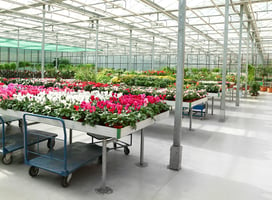I hope this finds all of you settled in and preparing for the upcoming spring season with your...
It’s Time for a New Spring by Mike H.
The new school year (for most) is now underway with a wide variety of scenarios unfolding compared to the almost complete shutdown that all experienced as last year ended. Some of you are teaching in-person, some remote, some a unique form of hybrid and many a combination of remote, in-person and/or hybrid! Makes me dizzy just thinking about it and how you are managing to make this all work out in your particular situation. Then, of course, you have to be prepared to pivot back and forth regarding teaching mandates as new metrics dictate or as the school board decides. Everyone wants to be back at school as we once were and you all stand on the front line so it is indeed a stressful time.
One thing we all now have in common is the need to adapt to change. A new normal is constantly evolving as new metrics and standards are interpreted and adopted. Hopefully, these changes will bring us full circle back to where, with minimal efforts and precautions, we can once again regain that much-needed sense of normalcy. I admire your efforts and what you do and wish you all the best as I know challenges lie ahead.
The silver lining to all this is that the appreciation for what we do is much greater as the appreciation and demand for plants, food items, and agriculture, in general, has risen to a level not seen in many years. People are forced to stay at home and, once again, appreciate the little things. I really feel that this new appreciation is here to stay. It’s just natural that we gravitate towards those things that make us feel good. Over time, the fast-paced world of convenience slowly ate away at that tradition of yesteryear to the point where, in many cases, it just lost its luster. I really think that this newfound appreciation is here to stay for quite some time. We’ll see…

On a separate topic, I know some of you grow an outdoor mum crop. These should be nearing maturity as buds swell and begin to crack color soon. How do yours look? Are they too big or too small, possibly too early or too late? Are you experiencing yellow leaves, root issues or is something else cause you problems? I’ve received more calls and emails than I usually do regarding mum problems this past summer. So if you’ve encountered issues, you’re not alone. While some things remain a mystery there are usually answers for each and every crop issue. If any of you have mum concerns or questions on growing them, please feel free to share them with me. Pictures are always very helpful. There may not be much we can do at this point to fix this year’s crop but we can do our best to prevent these problems from happening again. The only thing worse than having a crop problem is not knowing what caused it so that it can be prevented in future years.
As you set the stage for the upcoming growing season you might want to keep a few things in mind to make your lives easier in both the long and short term. Prevention, preparedness and a proactive approach can really help you when the greenhouses are getting full in late winter and spring. I know that some of you have initiated and maintain all the below but if you haven’t please consider these practices to help make your life a bit easier:

- Bugs do materialize out of nowhere! They’re quiet, sneaky and almost invisible and will challenge us forever.
- Develop a routine to check plants on a daily or at least weekly basis. Insect identification and monitoring would make a great class project.
- Detecting a population when small is much easier to control than later on when the crop is mature.
- Please avoid keeping pet plants in the greenhouse. They honestly harbor more bugs (with all life cycles) than you might want to imagine. When your spring liners and plugs arrive they’re just what these hungry insects will be looking for as the days get warmer and longer. When I was in production I called this luxury a perk of the night watchman (who was me) and I was guilty of this but I paid the price. I would not do it again.
- I know many of you have plants you carry over and use for class projects such as propagation, etc.. This is fine but please do monitor for insects and mites.
- Consider using beneficial insects to control unwanted pests. This can be a very easy means of control and much better than having to apply pesticides in the school setting. And another great project!
- I know I’ve mentioned this topic before but I really believe in taking a proactive approach when dealing with pests.

Automatic Irrigation is something to consider to save time, money and fertilizer while delivering the right amount of water to each plant.
- This may initially seem like a 3 dimensional jigsaw puzzle to some but you can methodically design a plan that works well for your greenhouse.
- Systems can be simple to complex and most school greenhouses seem to lean towards simple which will work just fine in most cases.
- The capacity of such a system will be based on water flow. Most school greenhouses have enough flow to do all benches with dripper’s on one zone, all benches with overhead sprinklers on another and perhaps all hanging basket lines on another. Each can be programmed to come on for a predetermined amount of time when wanted. If you have mums outside you can program another zone to take care of their needs.
- You can also incorporate an injector into the plan to maintain fertility and pH.
- While such a system is “automatic”, anything automatic needs oversight which is and will be necessary to make sure all is working as it should.
- As you know, watering and fertility are both key to a good crop. Too much or too little can adversely affect the end results. With an irrigation system one can calculate and predetermine what will be needed in the near future to make a good crop. This is much better, and easier, than perhaps more than one person making these decisions every day. These systems are designed to really help you and your plants.
- Such a system also makes it easier to enjoy the weekend without having to come in to water. Once installed, when the days get long and spring gets busy you’ll wonder why you didn’t implement such a system earlier.
- If you are interested in putting one of these together and have questions please let me know as I’d be glad to help.

Yes, it is time once again to order your spring liners, plugs and seed. As I wrote here in the beginning I think the flower industry is stronger now than it was a year ago. And I don’t think this is going away soon. This wave will continue now that many have been brought back into the world of gardening. I’m sure this experience was appreciated by many and that most will be back for more next spring.
I would love the opportunity to help you with your spring program. But no matter who you order your plants through, I would do it soon as we already see shortages and heavy demand for many products at this point in time.
If any of you are new to the world of greenhouses or fundraisers and need help with crop schedules, how many plants per pot, when to order, how to grow, etc., please let me know and I’d be glad to help you in any way I can.
Disclaimer!
If you’re doing something different in your greenhouse than is shared above and all is going well, please don’t change. Perhaps modify, experiment and consider but be cautious before changing a good thing. Successful growing is the result of many, many variables. Some we have control over and some we don’t. The above is only meant as a guide or checklist prior to the upcoming growing season.
Questions/Concerns?
If you need help or elaboration on any of the above topics, please feel free to contact us. If you need a source for or advice on annuals, perennials, pH or EC meters, soil or anything else, I can help you with that as well.
Happy Growing!

Mike Hellmann
Plants and Cuttings Manager



